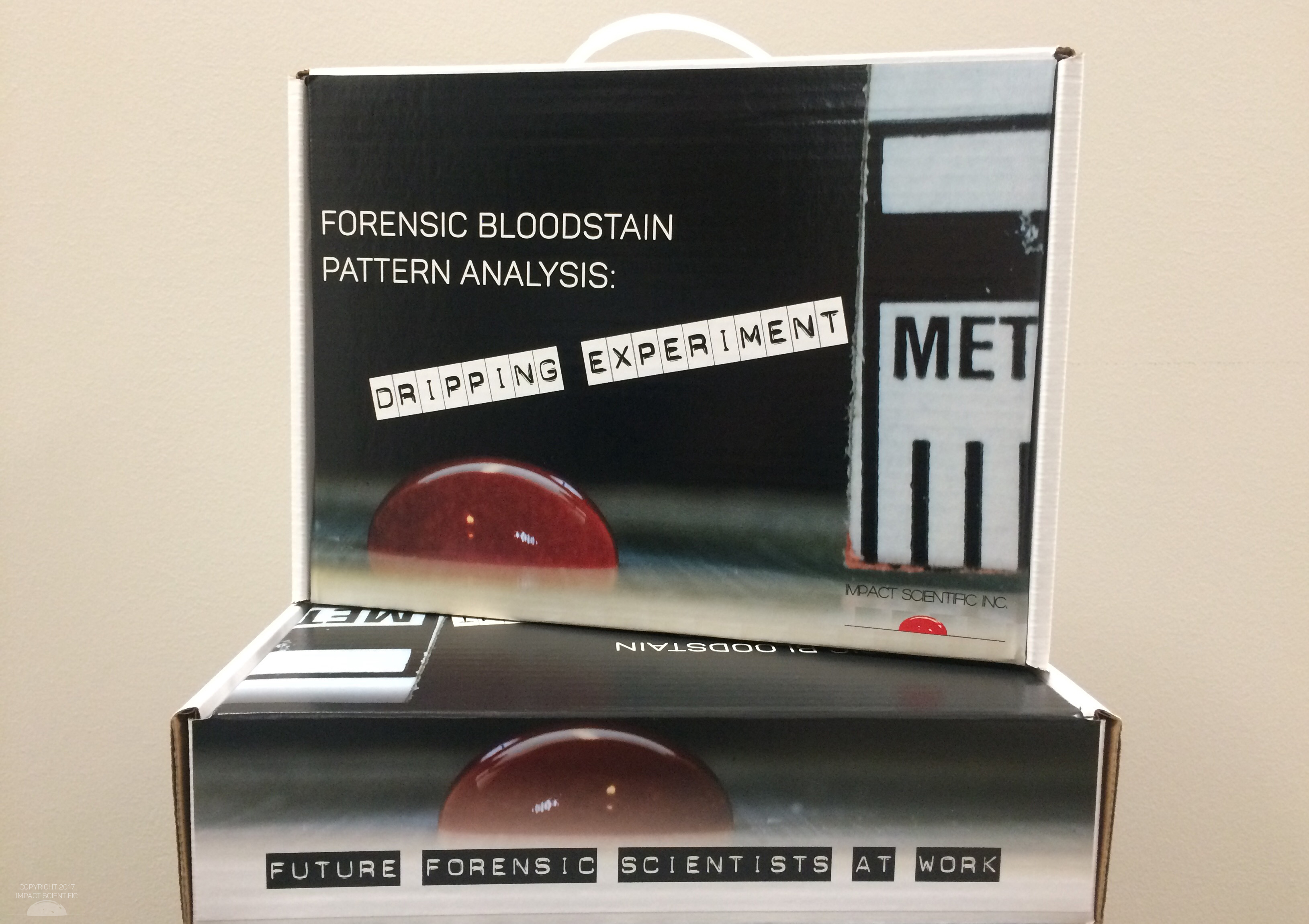Forensic Bloodstain Pattern Analysis
April 29, 2017 Filed in:
ArticlesA Practical Experiment For Learning Kinematics and Other STEM Concepts
Dr. Theresa Stotesbury, Research and Product Development, Trent University
theresastotes@trentu.ca
I am part of a research group out of Trent University (Peterborough, Ontario) that has developed a teaching kit that provides a 60-minute problem-based experiment that is suitable for high school science students. The activity connects forensic science and kinematics through the analysis of blood spatter. I will be presenting the kit at the OAPT conference at 9:30 on Friday May 12th.
Forensic science is an interesting discipline to engage students in STEM concepts. Many forms of physical evidence rely on concepts from physics and material science for analysis. For example, the trajectory analysis of projectile motion can be useful in both forensic ballistic and bloodstain pattern analysis. Bloodstain pattern analysis integrates many concepts from biology, chemistry and physics into its practices. Understanding the fluid dynamics of bloodshed as it relates to crime scene investigation is a very important tool because it can be used to provide reconstructive insights into the event of a crime.
The kit uses realistic training materials normally reserved for forensic professionals and a safe and effective blood substitute material in lieu of whole blood. The experiment examines the effect of terminal velocity on the size and shape of a bloodstain.


At the OAPT conference in May we will show you how the experiment works, and also how it was observed to enhance learning in kinematics. We will show you specific examples of students demonstrating depth and breadth of knowledge in kinematic and forensic concepts. We used pre- and post- experimental data to gauge student engagement and learning.
The dripping experiment is a great way to show students that CSI is more than just Hollywood’s portrayal of cool detectives in high heels and slick shades, and that real forensic investigators are scientists at heart and need to know STEM concepts to be successful at their job.
Our physics kits range from $150 to $250. We will not be selling them at the conference; however, inquires can be directed to
impact.scientific.inc@gmail.com.
See you at the OAPT conference!
Note: Co-Authors of the presentation and kit include: Dr. Theresa Stotesbury, Mike Illes, Dr. Cathy Bruce, Dan Clarke, Dr. Paul Wilson, Dr. Andrew VreugdenhilTags: Fluids, Kinematics


